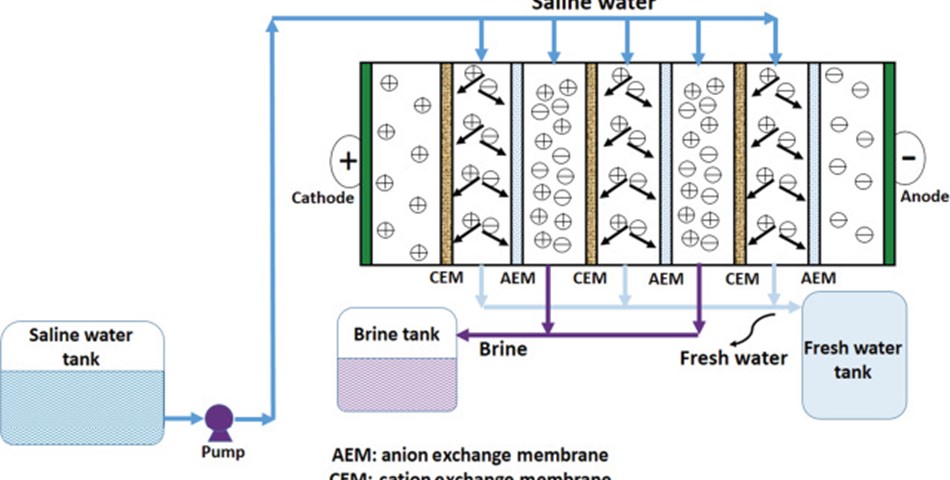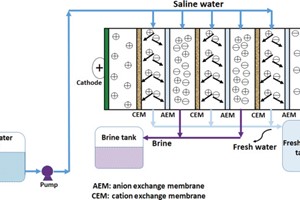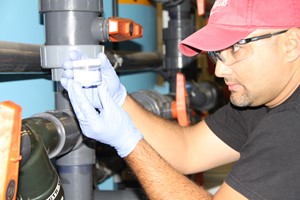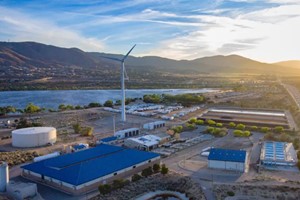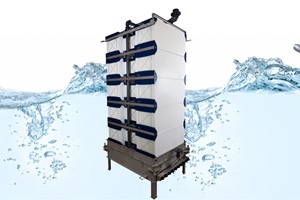Conventional electrodialysis is today commercially by far the most relevant ion-exchange membrane separation process. Electrodialysis was first developed for the desalination of brackish water to produce potable water. In this application, electrodialysis is replaced today to some extent by other membrane processes such as reverse osmosis and nanofiltration. Nevertheless, water desalination is still the most important large-scale application of electrodialysis. But other applications of electrodialysis in the food, the pharmaceutical and chemical industry as well as in wastewater treatment are gaining increasing importance. Another large-scale application of electro-dialysis is the preconcentration of seawater for the production of table salt. Some of the more important large-scale industrial applications of conventional electrodialysis and the stack and process design used in this application as well as the major limitations are listed in the below Table.
5.1.1 Brackish water desalination by electrodialysis
The production of potable water from brackish water is presently the largest single application of electrodialysis. In brackish water desalination, electro-dialysis competes directly with reverse osmosis. However, in a certain range of feedwater salt composition, electrodialysis has a clear economic advantage over other desalination processes. Electrodialysis is mainly used in small- to medium-sized plants with capacities of less than a few 100 m3 per day to more than 20,000 m3 per day with a brackish water salinity of 10005000 mgL-1 total dissolved solids. Since in electrodialysis both the energy consumption and the required membrane area increase with increasing feedwater concentration, reverse osmosis is considered to have an economic advantage for the desalination of water with total dissolved salts in excess of 10,000 mgL-1. The advantages of electrodialysis compared to reverse osmosis are the following: high water recovery rates, long useful life of membranes, operation at elevated temperatures up to 50 °C, and less membrane fouling or scaling due to process reversal. The disadvantage of electrodialysis compared to reverse osmosis is that neutral toxic components such as viruses or bacteria are not removed from a feed stream.
Thus, the product water may require a posttreatment procedure when used as potable water. In spite of the fact that electrodialysis reversal is significantly less sensitive to membrane fouling than reverse osmosis, some pretreatment of the feedwater is required. Especially, the iron and manganese ion concentrations must be kept below 0.3 and 0.05 mgL-1.
|
Industrial applications |
Stack and process design |
Status of application |
Limitations |
Key problems |
|
Brackish water desalination |
Sheet flow, tortuous path stack, reverse polarity |
Commercial |
Concentration of feed and costs |
Scaling, costs |
|
Boiler feedwater production |
Sheet flow, tortuous path stack, reverse polarity |
Commercial |
Product water quality and costs |
Costs |
|
Waste and process water treatment |
Sheet flow stack, unidirectional |
Commercial |
Membrane properties |
Membrane fouling |
|
Demineralization of food products |
Sheet flow or tortuous path stack, unidirectional |
Commercial pilot phase |
Membrane selectivity and costs |
Membrane fouling, product loss |
|
Table salt production |
Sheet flow stack, unidirectional |
Commercial |
Costs |
Membrane fouling |
|
Concentration of reverse osmosis brine |
Sheet flow stack, unidirectional |
Pilot phase |
Costs |
Waste disposal |
Industrial applications of conventional electrodialysis
5.1.2 Production of industrial water by electrodialysis
Depending on its application, industrial process water must meet certain quality standards in terms of total dissolved solids and colloidal material. Traditionally, precipitation, filtration, and ion-exchange are used in the production of industrial water. Today, these processes are replaced or increasingly used in combination with microfiltration, reverse osmosis, and electrodialysis. Major applications of electrodialysis in industrial water processing include re-demineralization of boiler feed and desalination of contaminated industrial water for reuse.
5.1.3 Electrodialysis wastewater treatment
During recent years, there has been a substantial increase in water costs. Also, the discharge of certain industrial wastewaters is often problematic and costly because of high salt concentrations or toxic water constituents. This has resulted in a trend to reuse industrial wastewater. A typical application of industrial water reuse is the recycling of cooling tower blow-down water. Electrodialysis is particularly suited for this purpose since high recovery rates up to 95% and high brine concentrations up to 100,000 mg can be achieved, which results not only in lower feedwater costs but also in a reduction in wastewater discharge. Furthermore, ion-exchange membranes can be operated at temperatures up to 50 °C, which is in the range of most cooling systems.
The recovery of water is not always the main objective in the treatment of industrial effluents. Very often toxic or valuable components such as heavy metal ions are removed to avoid pollution of the environment and save disposal chemical costs by recycling valuable materials. A large number of interesting applications for electrodialysis are in the galvanic industry and in metal surface treatment processes. A typical example is the recovery and concentration of nickel from the still rinse water and the recovery of acids such as HCl, HNO3, HF, etc. from spent pickling solutions. There are many more interesting applications of electrodialysis in wastewater treatment. Some of these applications require only relatively small electrodialysis units, as, for example, the treatment of small amounts of effluents from chemical processes containing highly toxic compounds. In other applications, rather large quantities of water must be treated. This is the case in the paper and pulp industry. Here electrodialysis has been successfully used to remove NaCl selectively from the chemical recovery cycle of Kraft Pulp production.



